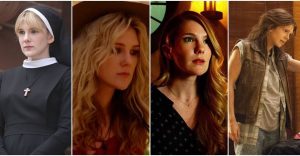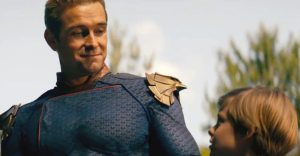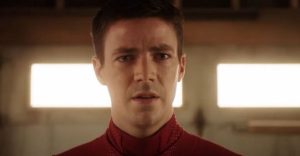Disney’s Chicken Little Is An Adaptation Of WWII Anti-Nazi Propaganda

Disney’s animated film Chicken Little isn’t just a retelling of the fable “Henny Penny”: it’s also an adaptation of a 1943 anti-Nazi propaganda movie by the same name. Released in 2005, Chicken Little was Disney’s first fully computer-animated movie and was a Box Office hit, being one of the highest-grossing releases of the year. The story centers on a young chicken who believes the sky is falling. While aspects of the story are recognizable from the original fable, there are further elements of Chicken Little taken directly from the 1943 propaganda short.
In the early 1940s, Walt Disney joined the war effort by producing animated shorts intended to raise morale and spread patriotic ideology. The attack on Pearl Harbor in World War II had a direct impact on the visionary’s film studio; according to the book The Magic Kingdom: Walt Disney and the American Way of Life, the day after the Japanese attack, 500 U.S. army troops occupied the studio, using it as a base of operations in order to protect a nearby aircraft production facility. Disney was approached to produce WWII films for the U.S. military, and the studio went on to create films for training purposes, to increase morale among the troops and the citizens, and to advertise and promote propaganda messaging.
The 1943 Disney short movie Chicken Little is a 9-minute long animation that subverts the original fable’s message, becoming a cautionary tale against mass-hysteria and disobeying authority. The “Henny Penny” fable, sometimes referred to as “Chicken Little” or “Chicken Licken,” is a moral-based folk tale about a chicken who mistakenly believes the sky is falling after being struck in the head by an acorn. The most common understanding of the story is that it warns against being a “chicken” — i.e. lacking bravery; however, the folk story exists in many forms, and some are more clearly a warning against mass hysteria. The latter interpretation is used by the Disney short, but with the added allegorical connection to foreign interference and the Nazi regime.

Chicken Little (1943) focuses not on a little chicken who makes a mistake, but rather a conniving fox who uses a book of “psychology” (in the original plan, the book was Mein Kampf) to trick Chicken Little and the rest of the fowl into leaving the safety of the poultry farm. Foxy Loxy accomplishes this by whispering through the fence holes, disguising himself as one of each group (the gossipy hens, the bookish turkeys, etc.). He subtly convinces the population to reject its wise leadership, Cocky Locky, and instead follow the advice of Chicken Little, who Foxy is easily able to manipulate because the young chick lacks intelligence. In the end, the fox eats them all (except Cocky Locky) and arranges their wishbones in rows resembling a war grave site.
Like the original fable, both the 1943 short and the 2005 feature film feature animal characters (mostly birds) with rhyming names like “Henny Penny” and “Foxy Loxy.” While there are a number of narrative aspects taken from the fable, the societal structure of 2005’s Chicken Little more closely resembles the propaganda film; furthermore, the aesthetic used for Chicken Little (2005) is clearly inspired by Disney’s 1940s films. Not only is the setting stylized as 1940s and ’50s Americana — evinced by the characters being dressed in period clothing and the movie’s inclusion of baseball culture — but, according to Computer Graphics World, the animating team took inspiration from Disney’s ’40s and ’50s animation style, particularly the 1942 Goofy film How To Play Baseball. While Chicken Little (1943) isn’t referenced by name, it’s hard to believe that the aesthetic connection to the propaganda film is mere coincidence, especially since the two share a title — and as Foxy warns at the end of the short, “don’t believe everything you read.“
About The Author


















